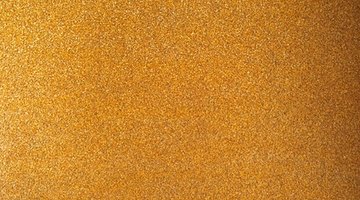How to Paint Plastic Wood
Two types of surfaces are commonly referred to as plastic wood: synthetic paneling and ta type of wood filler used to seal holes and repair cracks. Each type requires different preparation techniques and specific coatings. The surface should be properly prepared before painting to avoid paint failure over time.

Things You Will Need
- 300-grit sandpaper
- Tack cloth
- Roller frame
- 2 nap roller covers
- Acrylic latex primer
- 2- to 4-inch latex paintbrush
- Acrylic satin latex paint
- Oil-based primer
- Oil-based paint
- 2- to 4-inch oil-based paintbrush
- Mineral spirits
Tip
Do not paint over plastic wood paneling without abrading it, first, or you will have problems with adhesion. Do not paint over plastic wood filler with acrylic latex primers or paints, or the finish will peel.
Synthetic paneling
-
Sand the paneling with a fine-grit sandpaper to abrade it to promote paint adhesion.
-
Wipe the surface with a tack cloth to remove dust that could interfere with primer adhesion.
-
Apply a coat of acrylic latex primer with a roller. Smooth the wet primer with a paintbrush for latex paints. Allow the primer to dry for two hours.
-
Clean the brush with water.
-
Apply a coat of acrylic satin latex paint to the primed paneling in the same way you applied the primer.
Wood filler
-
Apply a coat of oil-based primer to the plastic wood filler with a paintbrush for oil-based paints. Allow the primer to dry for three hours.
-
Wash the brush with mineral spirits.
-
Apply a coat of oil-based paint to the primed wood filler with the cleaned brush.
The Drip Cap
- Two types of surfaces are commonly referred to as plastic wood: synthetic paneling and ta type of wood filler used to seal holes and repair cracks.
- Apply a coat of oil-based primer to the plastic wood filler with a paintbrush for oil-based paints.
- Allow the primer to dry for three hours.
Resources
Writer Bio
Ryan Lawrence is a freelance writer based in Boulder, Colorado. He has been writing professionally since 1999. He has 10 years of experience as a professional painting contractor. Lawrence writes for High Class Blogs and Yodle. He has a bachelor's degree in journalism and public relations with a minor in history from the University of Oklahoma.
Photo Credits
- sandpapier image by Thomas Aumann from Fotolia.com
- sandpapier image by Thomas Aumann from Fotolia.com
More Articles



